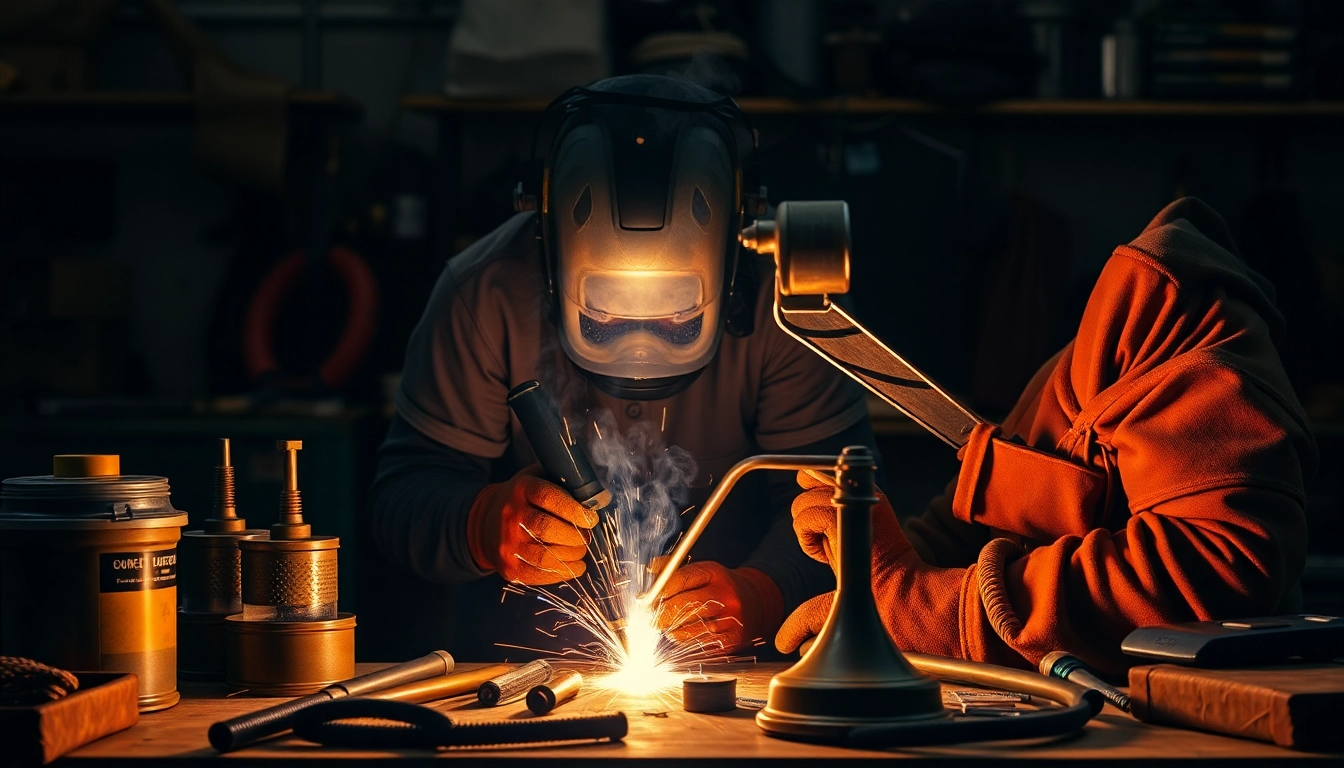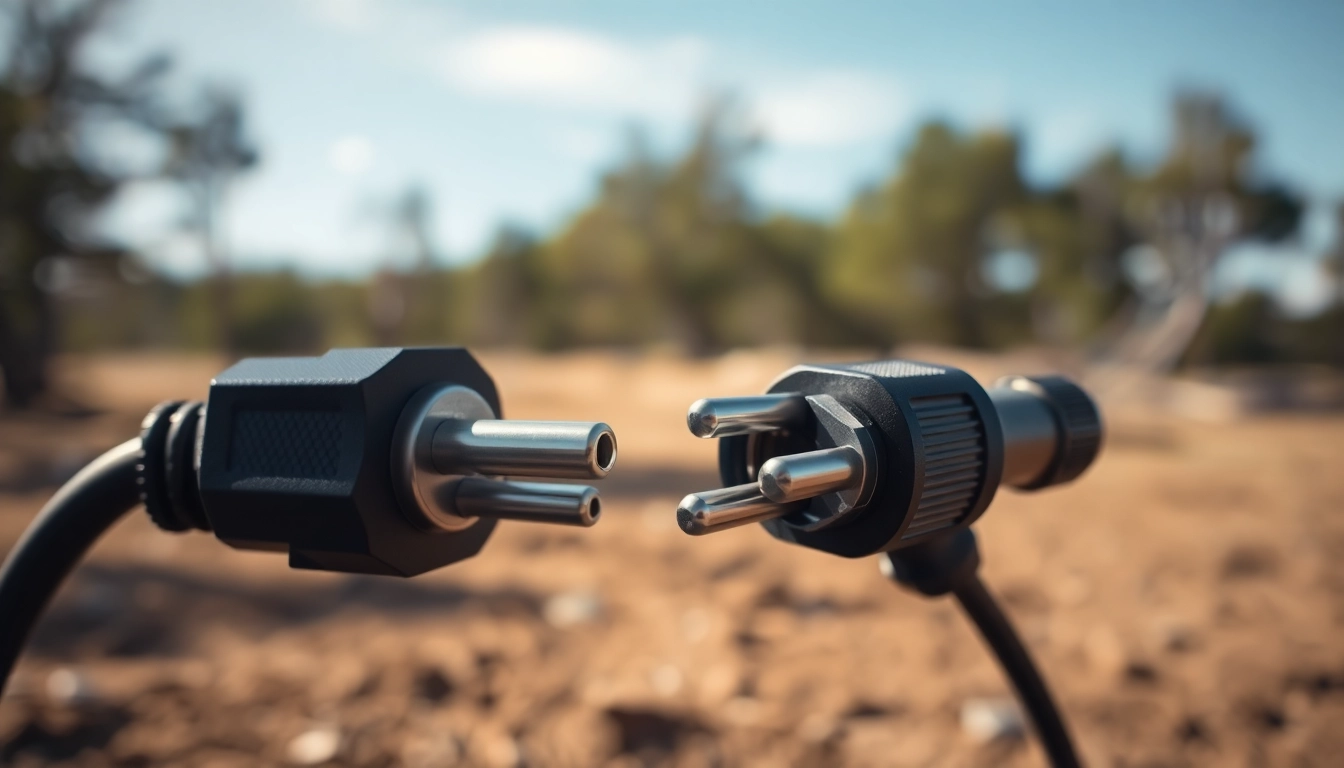Understanding Essential Welding Supplies
Welding is a crucial process in various industries, from construction to manufacturing, that involves joining metals through the application of heat and pressure. To execute welding projects effectively, having the right welding supplies is paramount. A comprehensive understanding of these essential tools, equipment, and safety gear not only enhances productivity but also ensures the quality and safety of the work completed. In this guide, we’ll explore the importance of quality welding supplies, key tools required for different welding techniques, safety gear, and tips on where to purchase these items.
The Importance of Quality in Welding Supplies
The relationship between quality and performance in welding supplies cannot be overstated. High-quality tools are essential for producing strong, reliable welds and reducing the probability of defects. Inferior welding supplies can lead to inadequate joints, safety hazards, and even costly rework, which can impede project timelines and budget.
Moreover, investing in high-quality welding supplies promotes durability and longevity, minimizing the need for frequent replacements. Quality tools often come equipped with innovative technologies that enhance usability, safety, and efficiency. For instance, a superior welding helmet with auto-darkening features can boost the welder’s productivity by eliminating the need to frequently adjust the helmet.
Key Tools Every Welder Should Have
Here’s a breakdown of essential tools that every welder should have in their toolkit:
- Welding Machine: This is the core equipment for any welder. Depending on the type of welding being performed—MIG, TIG, or stick—different welding machines will be required.
- Welding Helmet: A critical piece of safety gear, modern helmets protect the eyes and face from harmful UV rays and sparks. Auto-darkening helmets allow hands-free adjustments during the welding process.
- Welding Gloves: Durable gloves protect hands from high temperatures and hazards. They often come in various materials suited to different welding types (e.g., leather for stick welding).
- Welding Jacket: Flame-resistant jackets provide an essential barrier against sparks and molten metal.
- Welding Fume Extractor: This equipment helps maintain air quality in the workspace by removing harmful fumes generated during welding.
- Tool Bag: An organized toolbox or bag helps to keep all welding supplies in one place, making it easier to find tools when needed.
Safety Gear: Protecting Yourself While Welding
Working with welding equipment involves inherent risks, which means safety gear is non-negotiable. Aside from the welding helmet, gloves, and jackets mentioned earlier, the following items are essential:
- Respirators: Essential for environments with poor ventilation, respirators protect the welder from inhaling harmful fumes.
- Safety Boots: Steel-toed boots protect the feet from heavy equipment and sharp objects.
- Ear Protection: Hearing protection is necessary when working in environments where noise levels are high.
- Face Shields: These provide additional protection against sparks and heat during welding.
Types of Welding Supplies for Different Techniques
MIG Welding Supplies: What You Need
MIG (Metal Inert Gas) welding is a popular method due to its versatility and ease of use. Here are the specific supplies needed for MIG welding:
- MIG Welder: A power source with a wire feeder to continuously supply filler metal.
- Shielding Gas: Typically, a mixture of argon and CO2 is used.
- Welding Wire: A wire that melts during welding, often available in various diameters.
- Contact Tips: Consumables that transfer the welding current to the wire.
- Welding Cart: Helps to transport the welder and supplies efficiently.
TIG Welding Equipment: Specialized Tools
TIG (Tungsten Inert Gas) welding demands a different set of tools due to its precision needs. Key supplies include:
- TIG Welder: This machine uses a non-consumable tungsten electrode to produce the weld.
- Tungsten Electrodes: Depending on the material being welded, tungsten electrodes vary, with options available for DC and AC welding.
- Filler Rods: Used in addition to the tungsten for filling joints.
- Gas Lens: Provides better gas coverage during the welding process, resulting in cleaner welds.
Arc Welding Supplies: Basics to Advanced Options
Arc welding is a manual technique that relies on the heat generated by an electric arc. Essential supplies include:
- Arc Welder: Available in both AC and DC models, depending on requirements.
- Electrodes: Used as filler and heating materials that carry electricity.
- Welding Rod Holder: Keeps electrodes steady during welding.
- Chipping Hammer: Helps remove slag from welds.
- Wire Brush: For cleaning the welded joints after completion.
Where to Buy Quality Welding Supplies
Online vs. Local Suppliers
When it comes to purchasing welding supplies, both online and local suppliers have their benefits. Online suppliers often provide a wider variety of products and competitive pricing, while local suppliers can offer immediate availability and the opportunity to see products in person. Ultimately, the choice depends on individual needs, preferences, and geographical location.
Evaluating Supplier Reliability
Reliability is crucial when selecting a supplier for welding supplies. Look for the following indicators:
- Reputation: Research online reviews and ratings to gauge customer satisfaction.
- Return Policy: A solid return policy is essential for ensuring satisfaction with your purchases.
- Customer Service: Efficient and responsive customer service can make all the difference, especially when troubleshooting issues.
- Product Quality: Ensure that the supplier offers reputable brands known for quality and longevity.
Best Practices for Purchasing Welding Supplies
Purchasing welding supplies can be straightforward if approached correctly. Here are some best practices:
- Do Your Research: Familiarize yourself with the specific supplies you need for your welding technique.
- Compare Prices: Check multiple suppliers to find competitive prices, keeping in mind that cheaper does not always mean better quality.
- Check Availability: Confirm that the supplies you need are in stock, especially for critical projects.
- Consider Bulk Purchases: Buying in bulk can lead to significant savings over time, especially for high-usage items.
Maintenance and Care for Your Welding Supplies
Cleaning Your Tools for Longevity
Proper maintenance of welding supplies not only ensures longevity but also optimal performance. Regularly cleaning your tools can prevent the build-up of contaminants that may affect their functionality:
- Welding Helmets: Clean the outer lens often to ensure clear visibility. Use non-abrasive cleaners to avoid scratching.
- Welding Machines: Keep machines free of dust and debris. Regularly check for loose connections and signs of wear.
- Electrodes and Tips: Replace worn or damaged electrodes and contact tips to maintain quality welds.
Storage Tips for Safety and Efficiency
How you store your welding supplies can directly affect their durability and function. Here are some tips:
- Tool Bags or Boxes: Store small tools and accessories in designated bags or boxes to protect them from damage.
- Vertical Storage: Store rods vertically to avoid bending and damage.
- Environmental Conditions: Keep supplies in a dry, cool place to prevent rust, corrosion, or degradation.
Regular Checks: Ensuring Functionality and Safety
Conduct regular inspections of your tools and equipment to identify any functional issues early on. This proactive approach minimizes disruptions during work and ensures safety:
- Check Cables: Inspect the condition of cables and wires for fraying or damage.
- Safety Gear: Regularly check your personal safety equipment for wear and replace as necessary.
Advanced Welding Supplies and Technologies
Innovations in Welding Equipment
The welding industry is continually evolving, with innovations driving increased efficiency and safety. Some notable advancements include:
- MIG Welding Robots: Automating the welding process allows for consistent quality and reduced labor costs.
- Laser Welding: Offers precision and speed, useful in applications where traditional methods may fail.
- Smart Welding Machines: Equipped with sensors and connectivity, these machines can adjust settings in real-time for optimal performance.
Future Trends in Welding Supplies
Future trends suggest an increasing focus on sustainability and efficiency. The industry is likely to incorporate more eco-friendly materials and techniques while improving energy efficiency and reducing wastage. The deployment of AI in predictive maintenance for welding machines will enhance operational reliability.
Making Informed Decisions: What to Invest In
Investing in welding supplies can be daunting, given the multitude of choices. Here are some strategies to make informed decisions:
- Evaluate Your Needs: Prioritize purchases based on the types of projects you frequently undertake.
- Seek Professional Advice: Consult experts or seasoned welders about the best products for specific applications.
- Read Reviews: Consider user feedback and performance analyses before making significant purchases.



